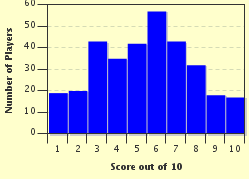Quiz Answer Key and Fun Facts
1. On the 1st of September, 1939 the German army rolled across the border of Poland starting the Second World War.
What excuse did Hitler use as a reason to start the invasion?
2. What was the name given to the new form of warfare tactics that the Germans adopted to advance so quickly into the heart of Poland?
3. How long did it take for the German Army to crush the Polish Army and assume control?
4. The period between September 1939 and April 1940 was known as what?
5. The inactivity of the Phoney War was broken on 9 April 1940 when Germany attacked which two countries?
6. What was the code name given to the attack on the western countries?
7. France was feeling pretty secure during the Phoney War due to a series of defences that they had established on the German/French border following the devastation of World War I.
What was the name of these defensive lines?
8. Which of these four west European countries fell first to the Nazis?
9. The French War Minister, Marshal Henri Pétain, referred to this area as: "A sector that is not dangerous. It is impenetrable."
The belief of the French that they were safe from attack via this area was short lived. On 10 May, 1940 German troops used this area to launch a very successful attack.
What was the name of that heavily forested area?
10. France fell on the 22 June, 1940. The formal surrender was held at what famous location?
Source: Author
Lssah
This quiz was reviewed by FunTrivia editor
bloomsby before going online.
Any errors found in FunTrivia content are routinely corrected through our feedback system.


